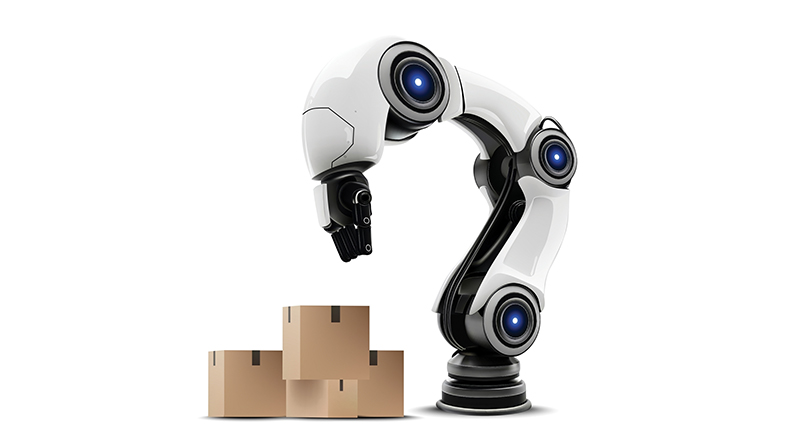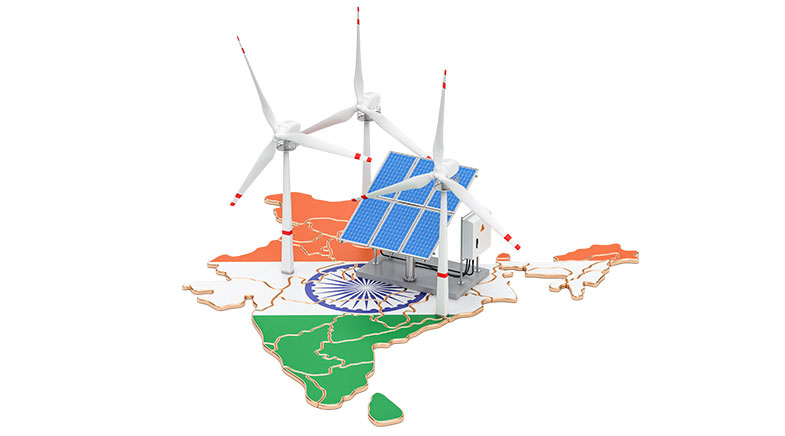Scorched earth and pouring rain
-
- from Shaastra :: vol 01 issue 04 :: Jul - Aug 2022
How extreme weather events are impacting agriculture.
howindialives.com
howindialives.com is a database and search engine for public data
THE CAUSE: CLIMATE CHANGE
India and some other countries in South Asia experienced one of their worst heatwaves this year, with temperatures hitting 50° Celsius in North India and Pakistan. The region is likely to experience even warmer temperatures in the coming years. According to a study by the Union Ministry of Earth Sciences, India's average surface air temperatures could rise by up to 4.4° Celsius by 2100 over the average for the 1976-2005 period.
Globally, too, temperatures have been rising. Average temperatures have risen since 1901, with an increased rate of warming over the past 30 years. All the top 10 warmest years on record worldwide have occurred since 2005, according to the US Environmental Protection Agency.
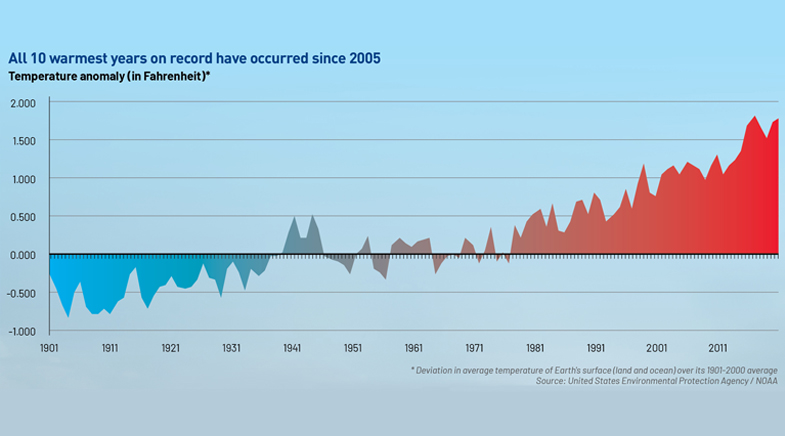
While extreme weather events are caused by multiple factors, the Intergovernmental Panel on Climate Change (IPCC) says that "even relatively small incremental increases in global warming (+0.5° Celsius) cause statistically significant changes in extremes on the global scale and for large regions".
For example, between 1850 and 1900, a hot extreme 10-year event was expected to occur once. An increase of 1° Celsius in temperature increases the likelihood of a hot extreme 10-year event by 2.8 times. And an increase of 1.5° Celsius increases the likelihood of this event by 4.1 times.

This has implications. The world has to alter its energy systems and economies to reduce emissions. At the same time, more locally, nations and populations have to prepare for a more volatile climate, according to a report by HSBC's ESG (environmental, social and governance) team.
THE EFFECT: AGRICULTURAL AND NUTRITIONAL LOSSES
Of all extreme weather events, drought not only has the highest impact on agriculture, it also impacts agriculture almost exclusively. It contributes to over 34% of crop and livestock production loss in least-developed countries (LDCs), and in low- and middle-income countries (LMICs), inflicting damage worth $37 billion between 2008 and 2018, according to the Food and Agriculture Organization (FAO).
While the impact of drought, floods and storms are fairly well-known, changing weather patterns also have second-order impact on agriculture through pests and insects. In 2000, several African countries faced a devastating infestation of desert locusts. Weather patterns can impact breeding cycles of insects, who tend to thrive in warmer weather.

While the number of human lives lost due to extreme weather events has been coming down, the figures for economic losses have been going up. On average, agriculture has been incurring over a third of total economic losses due to disasters. It is a key concern both in terms of loss of supply (imposing costs on consumers) and in terms of lost revenues for the sector, which tends to employ the poorest, especially in low-and middle-income countries.
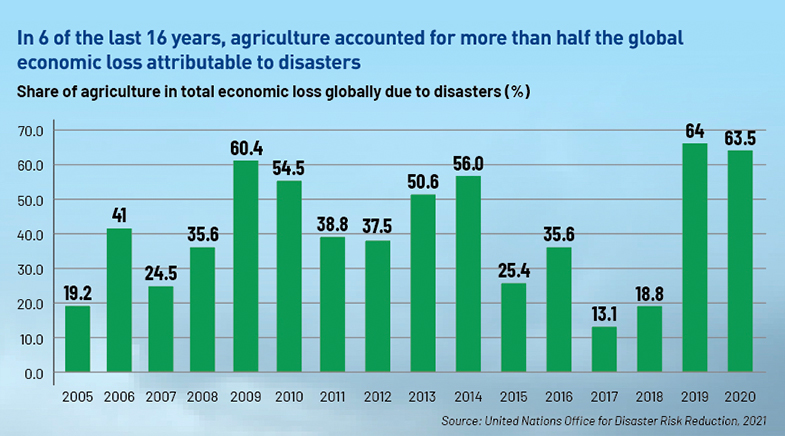
One of the unexplored impacts of the production loss in the agriculture is the 'hidden hunger', faced by those who don't get adequate supplies of essential nutrients — Vitamin A, iron, zinc, and calcium. These deficiencies are the perpetuating factors behind malnutrition and food insecurity, says FAO. Vitamin A deficiency remains relevant across LDCs and LMICs, and is suspected of being responsible for the deaths of millions of children every year, it said in its 2021 report The impact of disasters and crises on agriculture and food security.
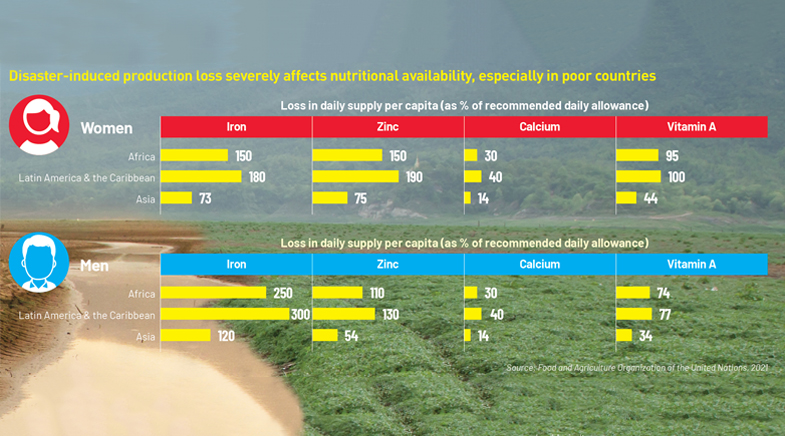
THE GEOGRAPHICAL SPREAD: ASIA AND INDIA
While disaster-induced production loss hits LDCs and LMICs disproportionately, geographically, Asia is the most affected. Between 2008 and 2018, it accounted for around 74% of all crop and livestock production loss, amounting to $207 billion, according to FAO.
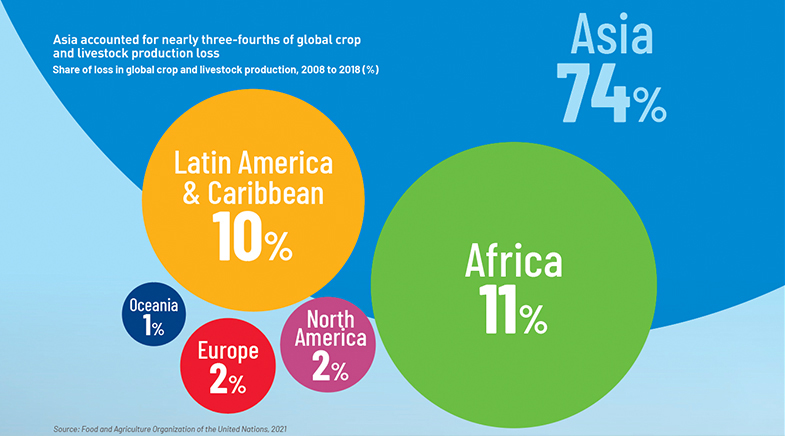
For India, 2022 was a particularly tough year, as heatwaves in North India were followed by floods in the North-East. Wheat production was low due to the heatwaves, and farmers reported that the quality of the crop had come down. Similarly, mango cultivators faced losses in the quantity and quality of the fruits. However, 2022 was not an exception. Every year, the country loses cattle and crop areas due to natural extreme events. While India has become better at dealing with some of these disasters, there is more that needs to be achieved.
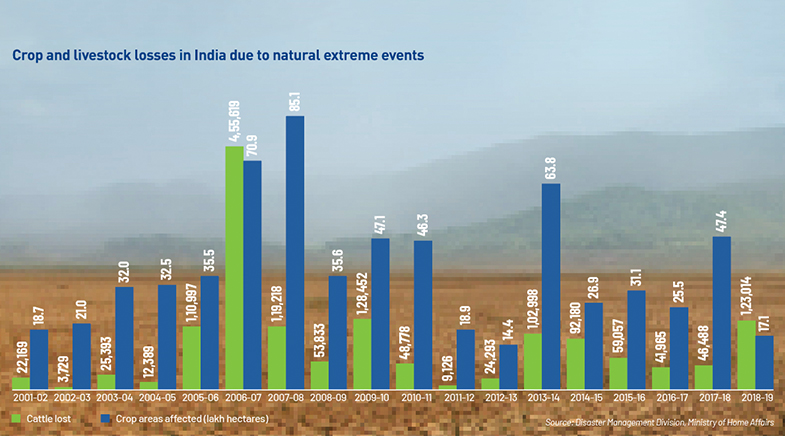
Have a
story idea?
Tell us.
Do you have a recent research paper or an idea for a science/technology-themed article that you'd like to tell us about?
GET IN TOUCH










